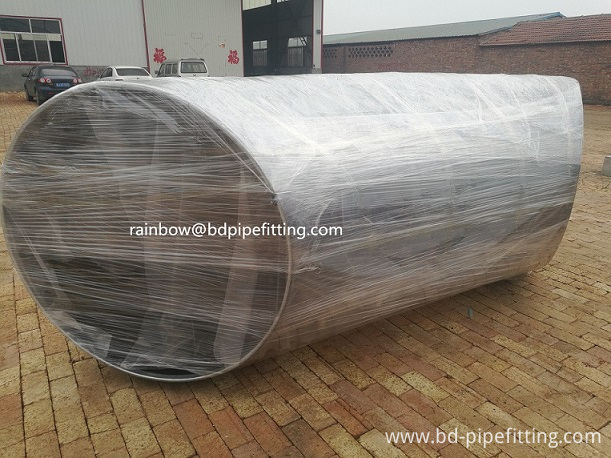Company Details
Shijiazhuang Bang dong Pipeline Technology Co,Ltd.
- [Hebei,China]
- Business Type:Manufacturer
- Main Markets: Africa , Asia , East Europe , Europe , Middle East , North Europe , West Europe
- Exporter:91% - 100%
- Certs:CE, ISO9001
Company Details
Shijiazhuang Bang dong Pipeline Technology Co,Ltd.
![]() October 08, 2018
October 08, 2018
Special standard for tolerance of thick-walled steel pipes
The biggest difference between thick-walled steel pipes and thin-walled steel pipes is the thickness of the Steel Pipe wall. Generally speaking, thin-walled steel pipes are cold drawing technology, while thick-walled steel pipes generally use hot rolling technology. If they are distinguished by measurement units, then It is generally believed that the wall thickness/tube diameter is equal to 0.02 is the watershed of thick-walled steel pipe and thin-walled steel pipe. The wall thickness/pipe diameter is less than 0.02. It is a thin-walled steel pipe, which is larger than the thick-walled steel pipe. In terms of use, thin-walled steel pipe is used. On the pipeline. Thick-walled steel pipes are mostly used for blanks of hollow parts. Used under pressure and on important pipelines.
1. Corresponding regulations and provisions for the selection and use of thick-walled pipe fittings When actually selecting or using thick-walled pipe fittings, they must first comply with the relevant regulations and specifications, especially for transporting extremely or highly hazardous fluid media. In the case of pipes such as flammable medium and high pressure gas. Under this premise, the type of pipe is determined mainly according to the use and conditions of use (pressure, temperature, fluid medium). The following is a list of relevant regulations/specifications for reference only.
1) Special equipment safety supervision method;
2) Special equipment safety inspection regulations;
3) Pressure pipe safety management and supervision regulations;
4) Special equipment quality supervision and safety supervision regulations;
5) Provisions for the design/manufacturing/installation supervision of special equipment (development);
6) Pressure pipeline safety technical supervision procedures (development);
7) Technical specifications for industrial metal pipelines (development);
Second, the problems in the standard selection of pipe fittings
1) The domestic pipe fittings standards are not perfect, and the unsupported pipe fittings standards should include the type parameter standards of pipe fittings and the Pipe Fitting material standards. However, the material standards are either incomplete or lack of quality technical requirements such as the requirements of the goods, inspection and assembly rules, and quality certification. Pipe fitting materials have poor standard matching, and are often formulated from their respective positions and angles rather than from the entire standard system of pressure piping. In the selection of the project, the pipe standard is available, but there is no corresponding forging or casting standard. The reality is that the standard for pipe fittings forgings uses the forgings of pressure vessels, and does not consider the differences between the two, such as welding, film inspection and other regulations.
2) The standard level of pipe fittings varies widely, and the content lacks consistency and systemicity, and there is a contradiction in the connection, resulting in inconvenience in use.
3) Type test standard for pipe fittings, only GB12459 and GB13401 standards specify the pressure calculation for the blasting test of steel butt welded Seamless Pipe fittings and steel plate butt Welded Pipe fittings. Other types of test standards or implementation standards that guarantee the quality of pipe fittings manufacturing are not available. .
According to the national standard GB/T17395 "seamless steel pipe size, shape, weight and allowable deviation" requirements for dimensional deviation, can be divided into standardized and non-standardized two, four grades.
Thick wall seamless pipe weight formula: [(outer diameter - wall thickness) * wall thickness] * 0.02466 = kg / m (weight per meter)
Thick-walled steel pipe size and tolerance:
Deviation level normalized outer diameter allowable deviation
D1 ±1.5%, minimum ±0.75 mm
D2 ±1.0%. Minimum ±0.50 mm
D3 ±0.75%.minimum ±0.30 mm
D4 ± 0.50%. Minimum ±0.10 mm
If you need steel product or fittings , pls contact or view website: www.bdpipefitting.com

The above is the Special standard for tolerance of thick-walled steel pipes we have listed for you. You can submit the following form to obtain more industry information we provide for you.
You can visit our website or contact us, and we will provide the latest consultation and solutions
Send Inquiry
Most Popular
lastest New
Send Inquiry